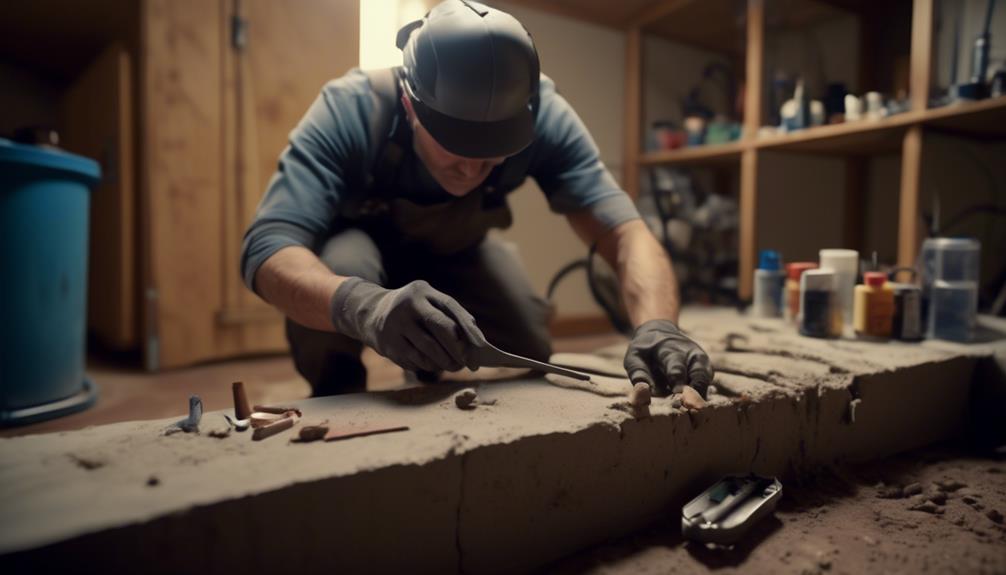Did you know that rodents can enter a building through a gap as small as a quarter of an inch? It’s astonishing how these tiny creatures can find their way into our homes and businesses, causing damage and posing health risks.
But fear not, because there is a solution – exclusion. By sealing entry points and gaps, you can effectively prevent rodents from infiltrating your space.
But how exactly does exclusion work, and why is it so important? In this discussion, we will explore the role of exclusion in rodent control and delve into the methods and materials used to keep these unwanted visitors out.
So, let’s dive into the world of sealing entry points and gaps and discover how it can make a significant difference in rodent control.
Key Takeaways
- Rodents can enter buildings through gaps at the ground level or on rooftops, so it’s important to thoroughly inspect the premises to locate entry points.
- Sealing gaps with materials like steel wool, door sweeps, and mesh screens can prevent infestations, property damage, and health risks associated with rodents.
- Common methods for exclusion include sealing gaps and cracks, installing door sweeps, and covering vents and chimneys with mesh screens.
- When choosing materials for sealing, factors like durability, weather resistance, and specific entry point requirements should be considered. Weather-resistant sealants and materials like sheet metal and woven hardware cloth are recommended. Regular maintenance and monitoring of exclusion measures are essential for effective rodent control.
Identifying Rodent Entry Points
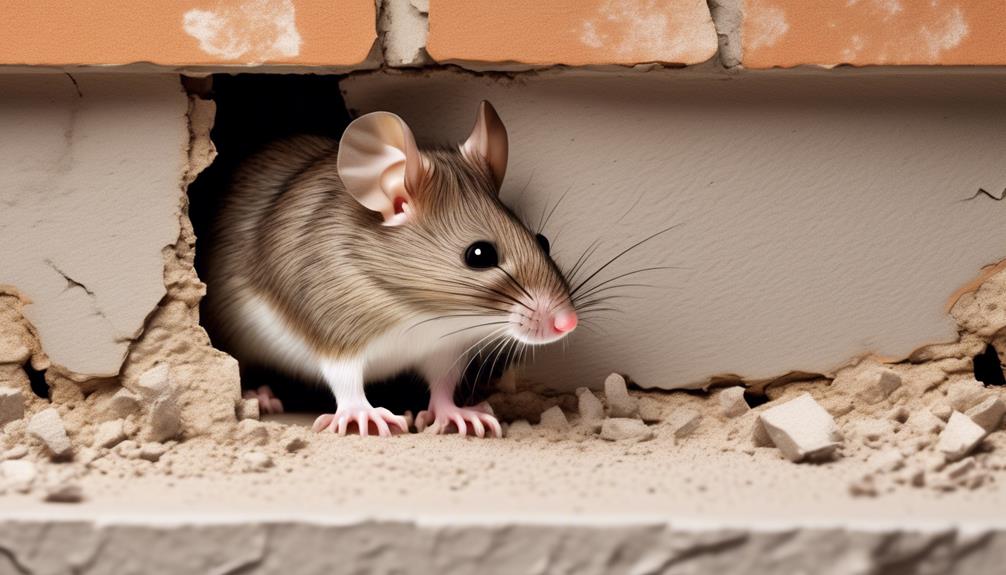
To effectively control rodents, it’s crucial to accurately identify their entry points. These entry points are often overlooked gaps at the ground level or on rooftops, as well as doors left propped open and structures with compromised integrity. These common entry points provide an element of vulnerability that rodents exploit to gain access to buildings.
It’s important to conduct a thorough inspection of the premises to locate these entry points. Cracks and crevices in walls, floors, and foundations should be examined carefully. Additionally, pay attention to gaps around pipes and wires entering the building, as they can serve as potential entry points for rodents.
Door sweeps should be installed to prevent rodents from entering through gaps under doors. Taking these preventive measures and implementing effective pest exclusion strategies will help to rodent-proof your building and keep it free from unwanted intruders.
Importance of Sealing Gaps
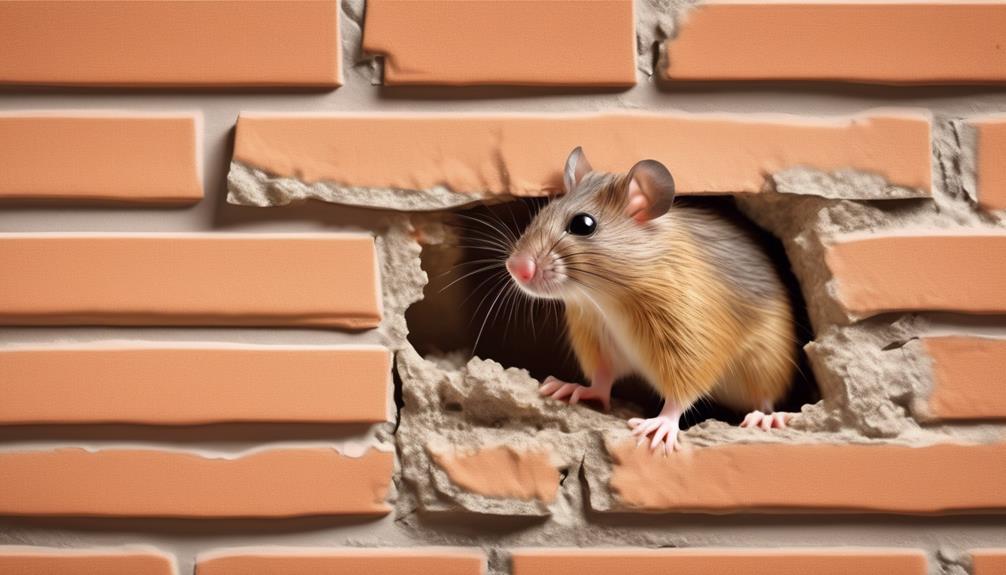
Sealing gaps is of utmost importance in rodent control, as it prevents infestations, minimizes property damage, and reduces health risks associated with these unwanted intruders. Rodents can enter buildings through small gaps in walls, foundation vents, utility lines, roof vents, and doors/windows.
An effective approach to rodent control involves inspecting the property for potential entry points and sealing these gaps with appropriate materials. One commonly used material is steel wool, as rodents are unable to chew through it. Additionally, installing door sweeps and mesh screens can further prevent pests from entering.
Properly proofing doors and windows is crucial in keeping rodents out. Regular maintenance, such as reinforcing crawl spaces and conducting periodic inspections, is essential in maintaining an effective barrier against rodents.
Common Methods for Exclusion
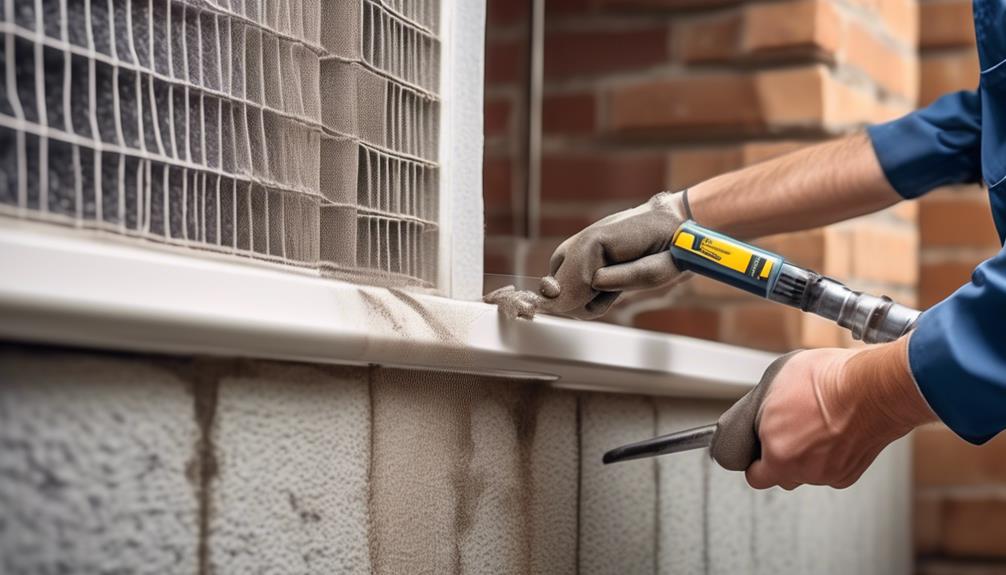
Inspecting your property for potential entry points is the first step in implementing common methods for exclusion in rodent control.
To effectively seal entry points and gaps, there are several common methods you can use. One method is to seal gaps and cracks using materials such as caulk, steel wool, hardware cloth, or weatherstripping. These materials help to close off any openings that rodents could use to gain access to your property.
Additionally, installing door sweeps is another effective method to prevent rodents from entering underneath doors. Covering vents and chimneys with mesh screens is also important to keep rodents out.
Lastly, it’s crucial to examine utility lines and seal any gaps or openings around them. By utilizing these common methods, you can effectively control rodents by sealing entry points and gaps.
Choosing the Right Materials for Sealing
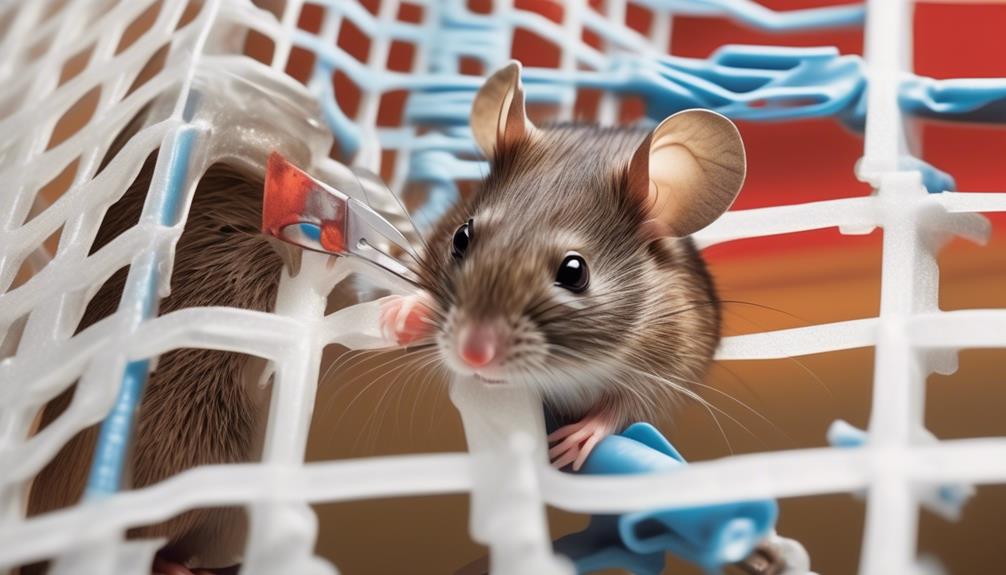
When selecting the appropriate materials for sealing gaps and entry points, it’s important to consider factors such as durability, weather resistance, and specific entry point requirements.
For sealing gaps, materials like sheet metal, concrete, or woven hardware cloth are recommended. These materials are sturdy and can effectively block rodents from entering.
Additionally, weather-resistant sealants should be used to ensure the longevity of the seal.
When dealing with specific entry points like weep holes and air vents, it’s crucial to choose materials that are both weather-resistant and water-permeable. This allows for proper ventilation and drainage while still preventing rodent entry.
For filling holes, using pea gravel instead of sand is a wise choice as rodents have difficulty tunneling through it.
Maintaining and Monitoring Exclusion Measures

To effectively maintain and monitor exclusion measures, it’s essential to regularly inspect and evaluate the sealed entry points and gaps for any signs of rodent activity. This step is crucial in ensuring the effectiveness of the rodent control efforts.
Start by thoroughly examining all the sealed entry points and gaps, paying close attention to any signs of damage or wear and tear. Look for any new openings or gaps that may have formed over time.
Additionally, inspect the surrounding areas for any signs of rodent droppings, gnaw marks, or nesting materials.
By conducting these regular inspections, you can identify and address any potential issues promptly, preventing rodents from re-entering your property.
Remember that maintaining and monitoring exclusion measures is an ongoing process that requires diligence and attention to detail for successful rodent control.
Frequently Asked Questions
What Is the Exclusion Method of Pest Control?
The exclusion method of pest control is a proactive approach to keep pests out. By identifying common entry points for rodents and sealing gaps and cracks, you can create a barrier that effectively prevents infestations.
How Does Rodent Exclusion Work?
Rodent exclusion works by sealing entry points and gaps to prevent rodents from entering your property. Regular inspections help identify common entry points, and DIY techniques involve using materials to seal these areas. Hiring professional services ensures thorough exclusion and prevents future infestations, benefiting overall pest control efforts.
How Do You Seal Rodent Entry Points?
To seal rodent entry points effectively, start by inspecting your home for common entry points. Use DIY solutions like caulking gaps, wire mesh, installing door sweeps, and weatherstripping options. Regular maintenance is important. Professional services are available too.
How Are Doors Sealed to Prevent Rodents From Entering?
To prevent rodents from entering, effective door seals are crucial. Utilize rodent proofing techniques such as weatherstripping to seal gaps and common entry points. DIY solutions or professional services can reinforce doors, providing the benefits of proper sealing. Regular maintenance ensures rodent exclusion.


